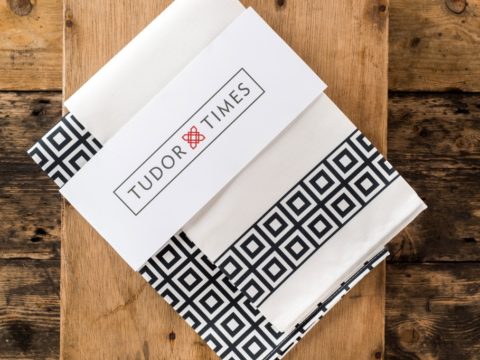Gainsborough Old Hall
A mediaeval masterpiece in a town centre
Chapter 2 : Visiting the Old Hall
The first impression is of a building of mixed black and white timbering and redbrick. The overall plan of the buildings is U – shaped, with the original Great Hall forming the base of the U, and the wings formed of the east and west ranges. In the north-east corner is a four storey, red-brick tower. The entrance is through a pleasing Tudor arched doorways in the red-brick, sixteenth century east range.
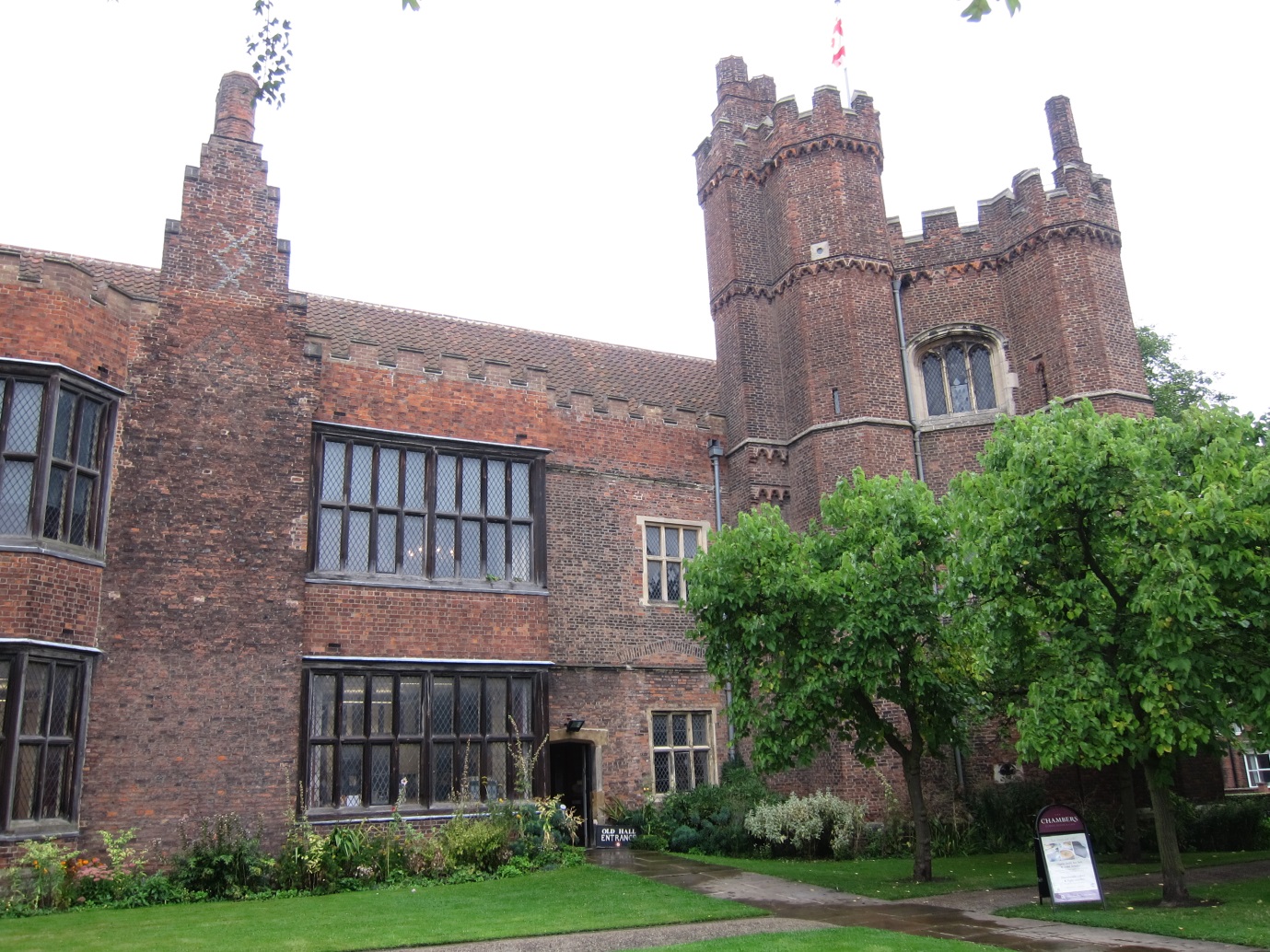
Immediately inside is a small shop and ticket office and the café. The shop has some interesting books written by a local historian, in particular works relating to Rose Locke, later Lady Hickman, who lived here in the period 1596 - 1610.
The café is quite sizeable, serving coffee and cake, sandwiches, soup and baked potatoes.
The inner wall of this open area shows the original timber frame construction, and there are significant traces of the original wall paintings. The colours have largely faded, but the outlines of fruit and flowers can still be seen, and there are some helpful reproductions to give an idea of just how colourful the walls must have been. Passing through a modern door, there is a staircase down to the loos, and two corridors. One forms the base of the U, and the other, to the left, runs parallel to the café.
The tour starts by going straight ahead. On the left are leaded windows overlooking the little knot garden, and to the right is the entrance to the absolutely amazing mediaeval Great Hall. The Hall is one of the very best examples of its kind in the country, some 40 feet in length and at least 20 feet in height. The roof is a marvel of engineering, constructed of oaks that were felled in the 1460s, according to the dendro-chronologists, from the dense forests that once surrounded Gainsborough.
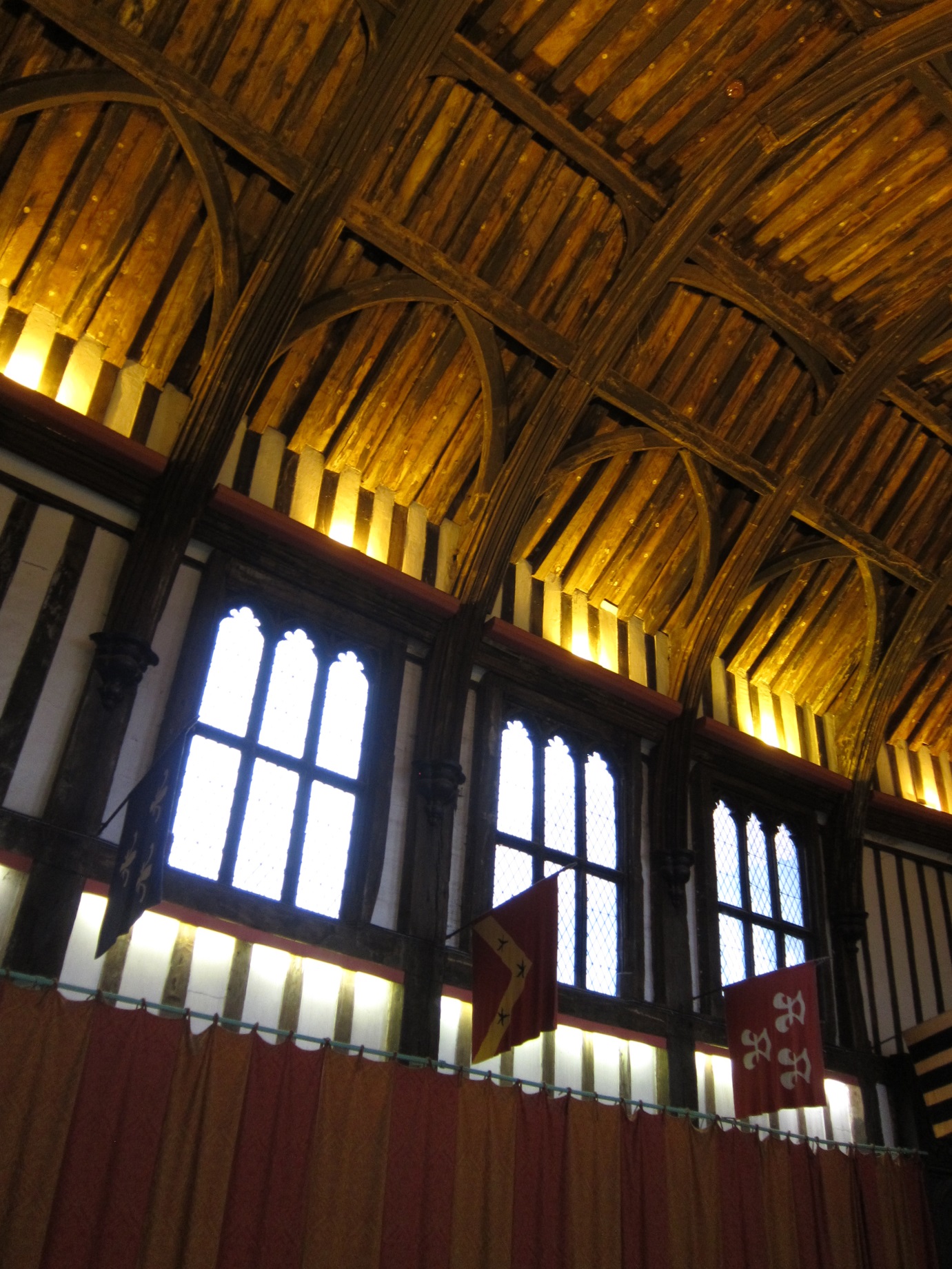
To the east end was the lord's dais, where the Burghs would have sat, looking down on the household sitting on forms in strict order of rank. On the northern, outer wall is a truly beautiful stone bay with delicate tracery, jutting out to allow light to enter from three sides.
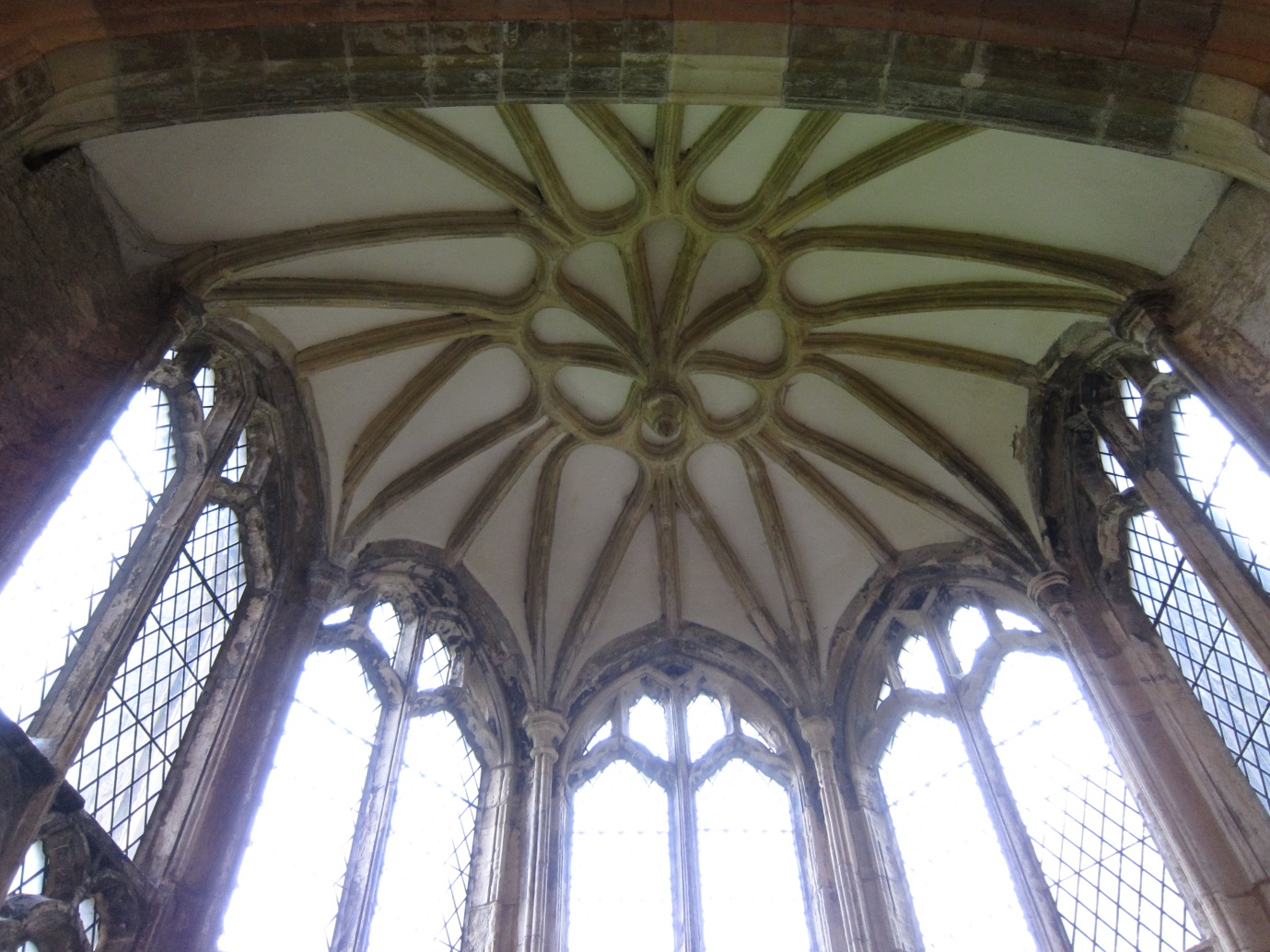
The original hard-packed earthen floor, with its regular top-dressing of ox-blood, has been covered over with tiles more palatable to modern feet.
At the south end of the Hall are the entrances to the buttery (where the butts of ale and beer were kept, under the watchful eye of the butler), the pantry, where the bread was stored, the servery where final dressings were given to food before it entered the Hall, and the huge kitchens. When the Hall was in everyday use in the late fifteenth and early sixteenth centuries, these doors would have been hidden by huge screens.
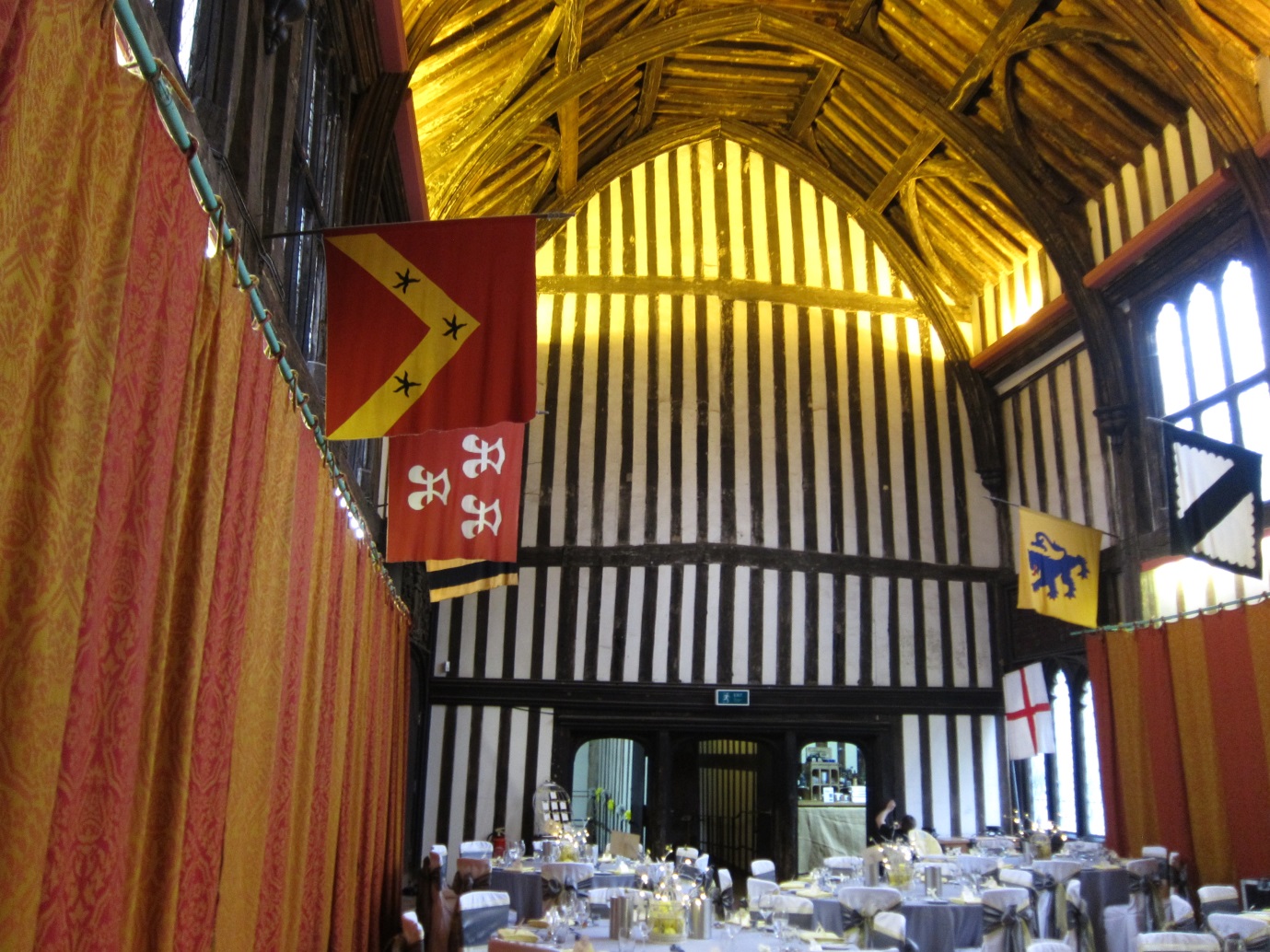
The kitchen itself is a superb example of its type. Built of brick, rather than timber, to minimise fire risk, it may originally have been a separate building, with what is now the Servery acting as a fire break.
There are two enormous fireplaces, large enough to roast oxen, and what is probably a pastry oven. Unlike the Hall, which was heated by a central fireplace with the smoke drawn up through a louvre in the centre of the roof, the kitchen fireplaces have wide-chimneys, complete with steps for the chimney sweeps to climb up.
Above the kitchen are the Steward's Room and parlour. The Steward was responsible directly to the Master for the whole of the running of the house, and possibly, the estate. He would have had the muniments chests here, and the ready money for buying such of the household's needs as were not provided directly in kind from the estate.
Passing back through the Servery, into the West Range, there is a series of rooms of combined brick and timber construction, on two floors. These rooms are used for temporary, and permanent, exhibitions.
To access the East Range again, you must pass back through the Great Hall, but, instead of turning left back to the entrance, you turn right and climb the newel staircase. This is a fairly wide spiral staircase, leading up to the solar passage. It was a late Elizabethan addition – previously it would have been necessary to go outside from the Great Hall and climb an external staircase to the Solar.
The Solar was the room used by the Master and Mistress and their immediate friends and family when they wished to withdraw from communal life in the Great Hall. As time passed, this became the norm and the practice of the whole household living, sleeping and eating in the Hall was superseded.
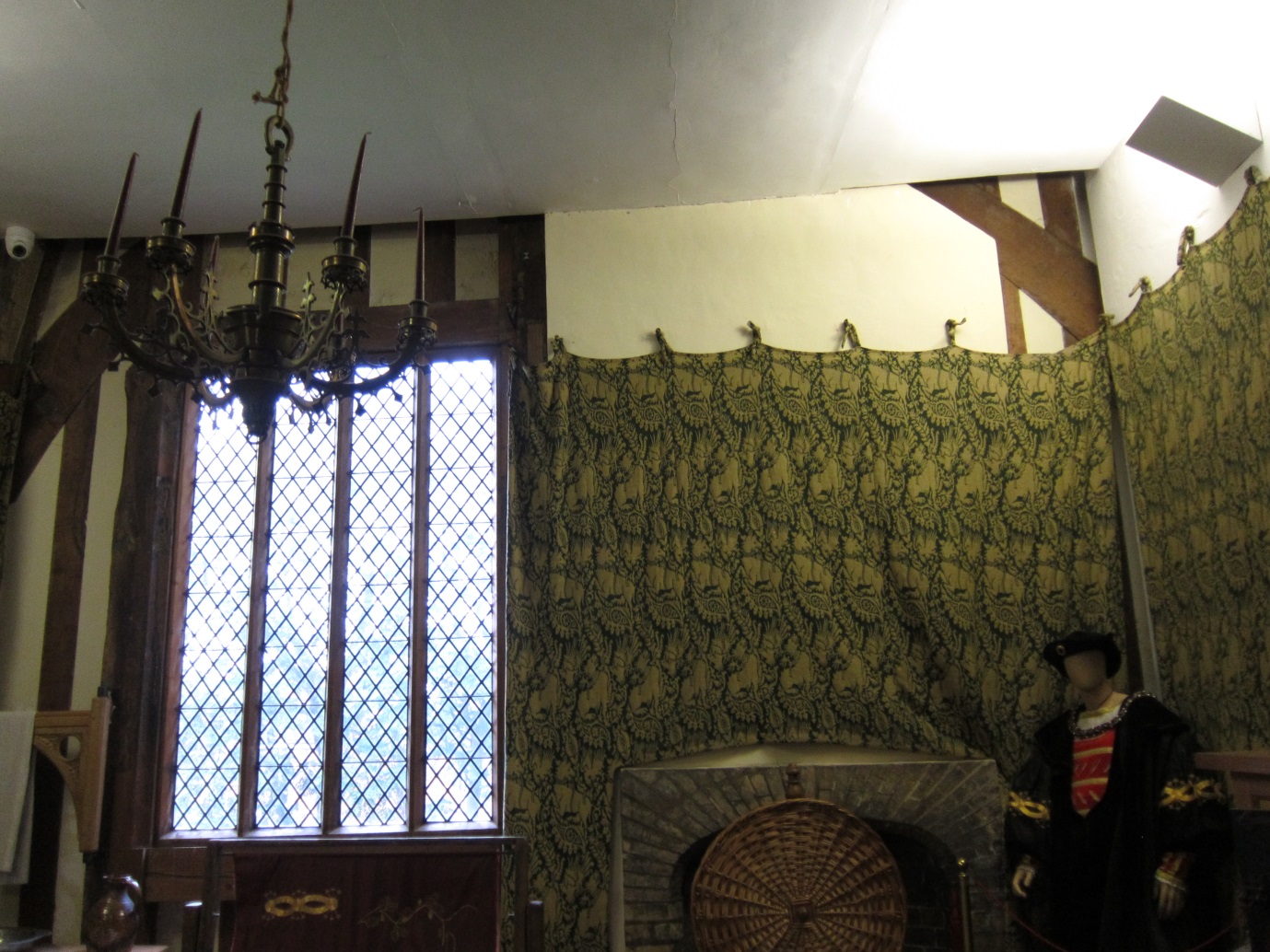
The Gainsborough Solar is a very inviting space. It has been furnished in the style of the mid-1500s with hangings of green and gold draped over the walls, and a bed in the corner. There are cupboards, settles and board games typical of the period. There is also a very interesting embroidery frame, such as would have been used by Katherine Parr, and also a reproduction of a suit of clothes of Henry VIII, based on reconstruction from paintings.
Emerging from this room, and continuing north, you enter the Inner Chamber. This houses the oak beamed louvre that originally stood atop the Great Hall to draw out smoke.
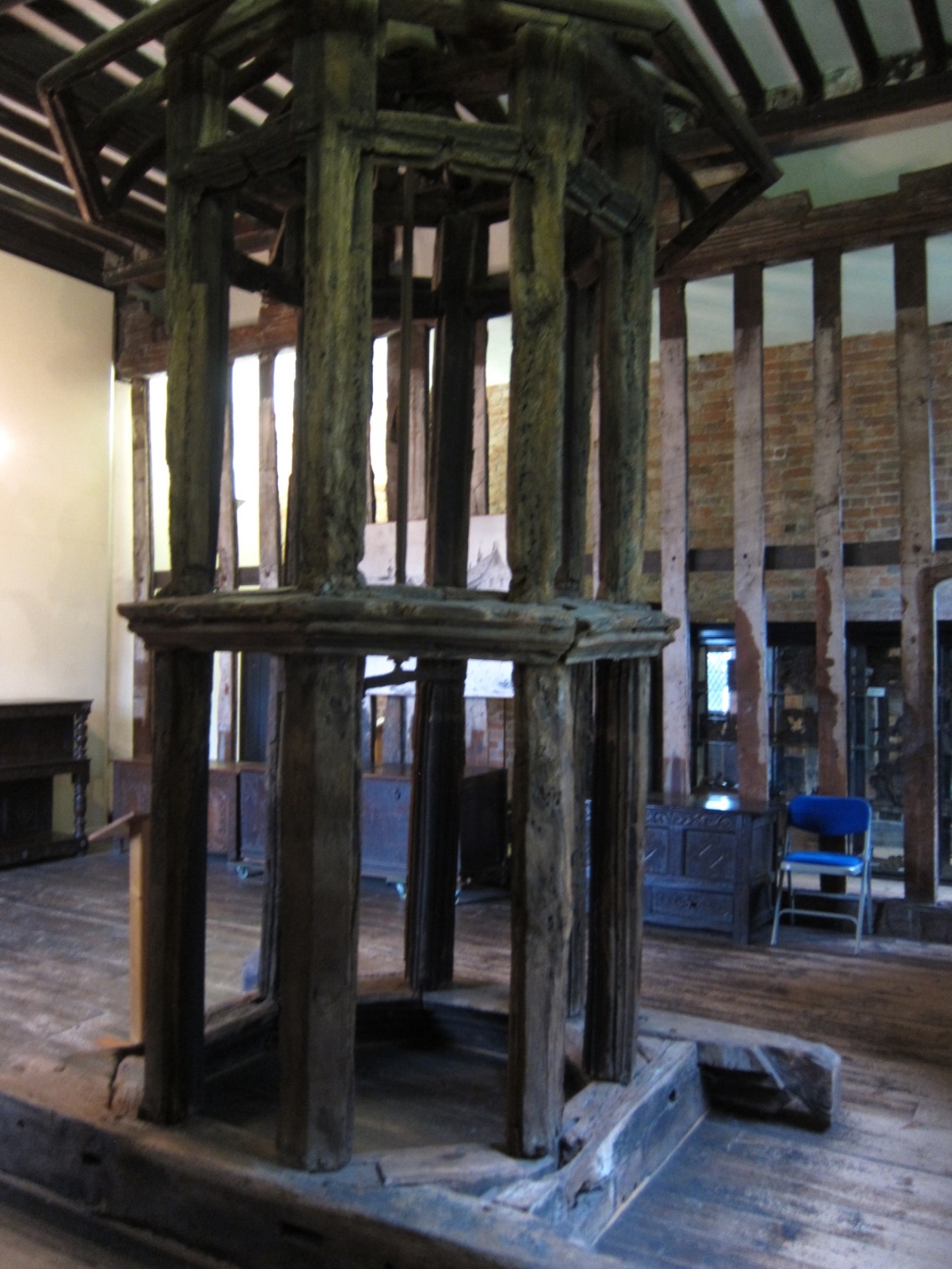
Leading off the Inner Chamber is the tower, probably built in the 1480s of red-brick, it has a single room on each of its floors. A precipitous spiral staircase leads up to the roof, from which the town can be seen, and the far off chimneys of Newark.
Back down from the tower, beyond the Inner Chamber is the beautiful Upper Great Chamber – the main living room for the family once the Great Hall had fallen out of fashion. This Great Chamber continued in use in later years as a ballroom for the town. It is decorated with many pictures of the Burgh and Hickman families and some fine musical instruments, as well as a collection of oak settles and chests.
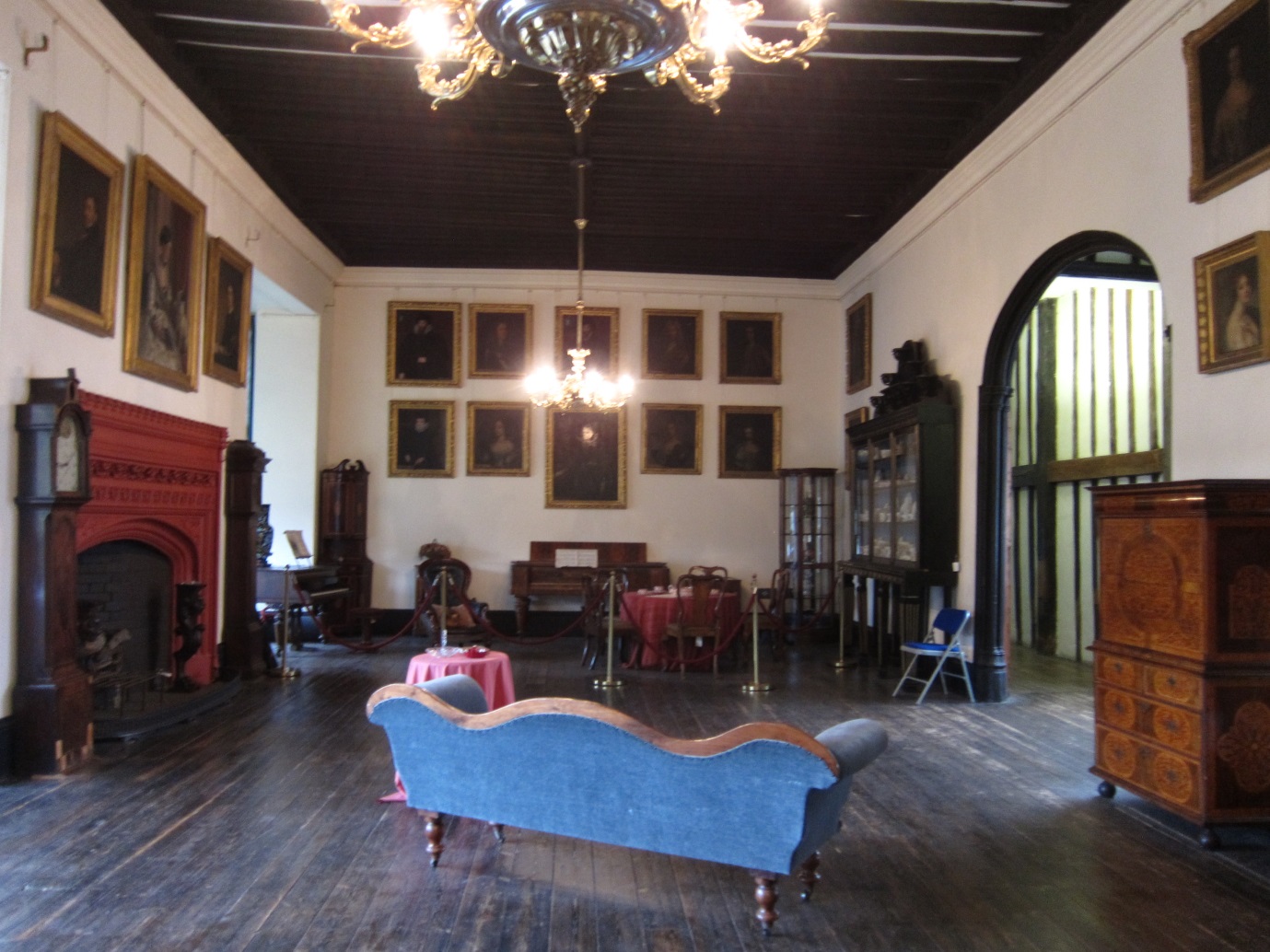
Continuing along the East Range corridor (allegedly haunted by a Grey Lady, reckoned to be Katheryn Howard) is the Tudor Bedchamber, decorated in the style of the late 16 th century.
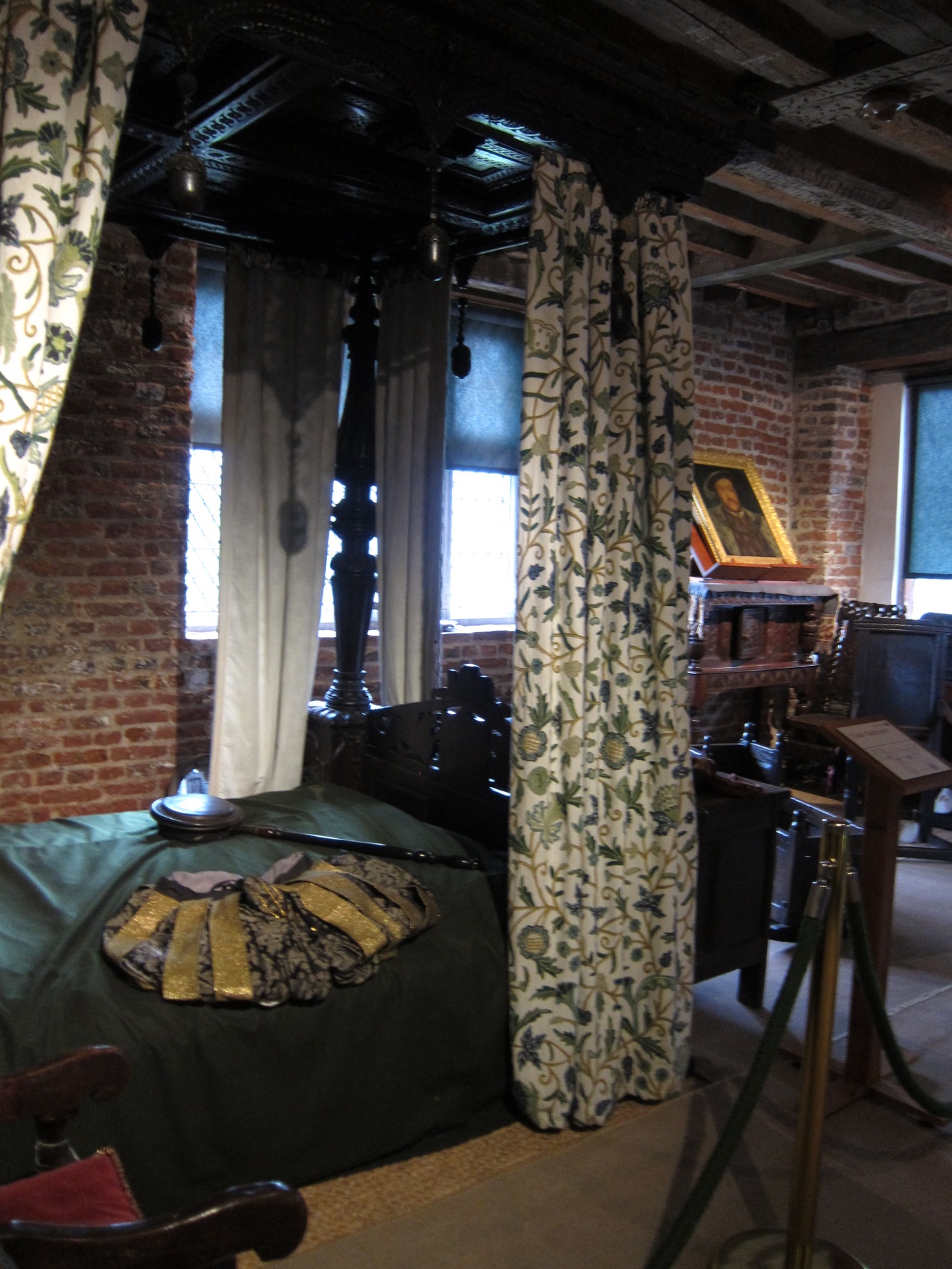
Returning down a modern flight of stairs the final rooms to see are the Panelled Room, which lives up to its name, and a small inner chamber called the Tyrwhitt Room which has a little Henrician graffiti on the walls, although it is not possible to make out what it says.
There is very little left of the original grounds. A small knot garden is in the centre of the U and there are lawns with mature trees surrounding the whole.
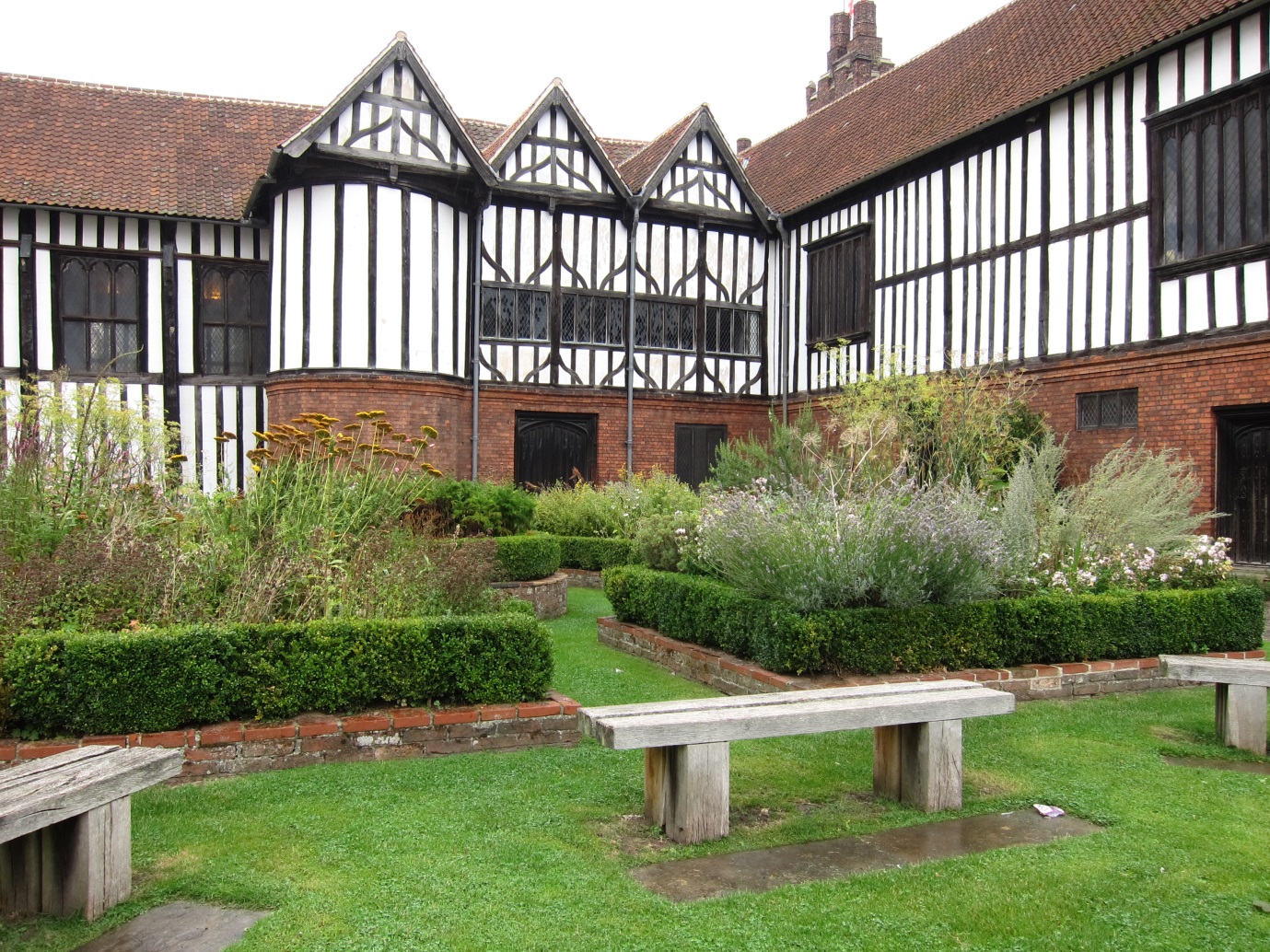
It is fascinating to see such a superb example of a house of the period and the clever use of furnishings and fabrics to give a feeling of how day to day life was lived. In particular, in the Solar, I could imagine Katherine Parr sitting sewing as her father-in-law propounded his support of Henry VIII's annulment, and his eagerness for the Boleyn marriage.
